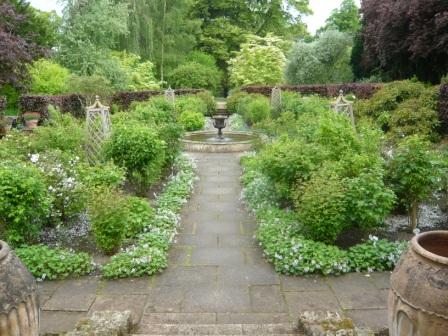Thrive in the Garden with Disability
Thrive is a national charity that helps people with a disability to start or continue gardening. They have specific assistance for wheelchair users, those recuperating from heart disease or strokes and many other tips and assistance. I am indebted to them for these tips and ideas that we can all learn from.
Tips on Garden Design for all Disabled Gardeners
- Garden layout can make a real difference to how you enjoy gardening. Depending on your disability, it might be easier to focus more on container growing. Make sure any ground level areas are low maintenance to keep the digging and weeding needed to a minimum. Plan plenty of seats around the garden to save your energy and have some shady areas where you can sit to garden on hot days.
- Avoid large lawns and lawns with sharply curved edges as they will be more time consuming to maintain. Consider having a semi-wild lawn with mown paths to save time and effort. Lawns are difficult to manage so consider replacing some or all of the lawn with a hard surface.
- Borders will be more manageable if you can reach across them easily. So make your flower borders no more than 2 foot wide if you have access from one side, or 4 foot wide if you can reach from all sides.
- Containers and raised beds can look attractive and are ideal if you want to start gardening on a small scale. A raised bed can be raised just a few inches, or could be at a comfortable height for you to sit or even stand.
- Ponds can be a delightful garden feature but be aware that maintaining a pond can involve heavy jobs like clearing weed, and open water can be a danger. A small raised pond might be safer and easier to maintain and it will be easier to enjoy sitting down than a ground level pond. Why not look at installing a low maintenance water feature instead of a pond so you can still enjoy the sound and visual interest of flowing water.
- You’ll feel safer and will be able to get things done faster if all your paths are even, with a surface that gives good grip. A 3 feet wide path is recommended as a minimum. Changes in level are a common hazard in gardens so consider installing ramps.
- Consider having a table outside for gardening jobs like seed sowing and potting up. A recess in the table will make it easier to reach things. Plan in water butts or stand pipes around the garden to save time and effort when watering.
- Take time to choose any paving – it should be non-slip and non-glare.
- Always choose safe power sources for any power tools or mower that you might want to use. All electrical equipment should be fitted with a residual circuit breaker.
- Plan how you are going to move things around the garden. Twin-wheeled lightweight barrows, barrows to use one-handed, trolleys or flexible buckets are options that can save energy and strain. Choose a composting system that suits you – there are many different models and bins can be positioned at different heights to save bending.
- Get rid of or avoid plants that cause you problems – rampant growers, plants that take up too much space, plants that are hazardous to you, or that cast too much shade.
Other Links
Royal Horticultural Society RHS ‘Gardening for All’
National Council for Conservation of Plants and Gardens ‘Conservation through Cultivation.’
Garden Organic National Charity for Organic Gardening.
BBC Gardening

One thought on “Thrive in the Garden with Disability”
The community garden in back of my apartment building has table that are filled with soil and tons of growing vegetables. They are ideal for people who are unable to do any bending and for people who are using a wheel chair. And they keep the rabbits away!They are so awesome we should all have one…
GartenGrl
Comments are closed.